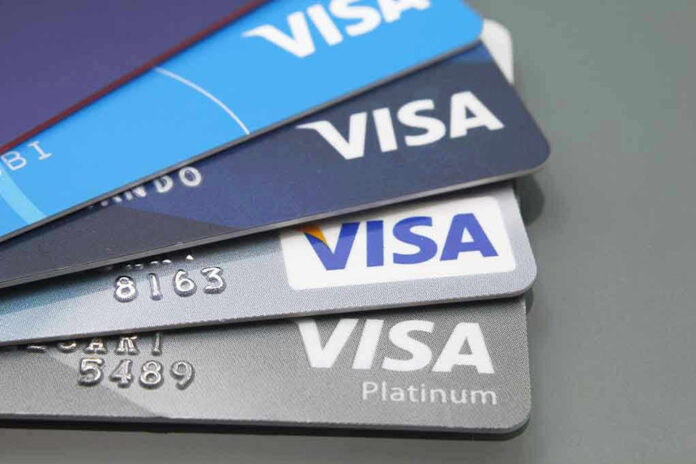If you think a savings account can’t change your life, wait until you see how one simple switch might be able to turn your dusty emergency fund into a money-making ninja—and why your bank is secretly hoping you never read this.
At a Glance
- High-yield savings accounts (HYSAs) offer interest rates 10 times higher than traditional savings accounts.
- The Federal Reserve’s recent rate decisions have kept HYSA yields at multi-year highs, but this window may close soon.
- Switching to a HYSA is a low-risk, high-reward move for almost anyone with idle cash.
- Online banks are shaking up the industry—old-school banks are not amused.
- Your emergency fund could be earning you hundreds per year with almost zero effort.
How I Stopped Letting My Money Nap on the Job
Picture this: your so-called “emergency fund”—the financial version of a security blanket—sat for years in a traditional savings account, earning less interest than the change between my sofa cushions. You’d check your balance after a year and wonder if your bank had secretly mistaken “interest” for “disinterest.” Then you discover high-yield savings accounts (HYSAs), online banks’ answer to the question, “What if savings accounts actually made you money?” HYSAs emerged in the 2010s, turbocharged by digital banks eager to lure customers with yields up to 5%—while the national average for old-school accounts lagged below 0.40%.
Fast-forward to 2025: the Fed’s quest to tame inflation pushed savings rates sky-high, with many HYSAs offering APYs that would make a Wall Street trader spit out their coffee. Traditional banks, meanwhile, hope you’re too busy to notice your money could earn more doing absolutely nothing elsewhere. The best part? HYSAs are FDIC-insured, keep your cash liquid, and usually require no minimums or monthly fees. It’s like getting upgraded to first class without even asking.
Why the Big Banks Want You to Ignore This
Online banks and fintechs—think Marcus by Goldman Sachs, Axos, AdelFi, and friends—are on a mission: steal your deposits from the likes of Bank of America and Chase by dangling juicy yields. The result? A seismic power shift. Consumers are now empowered to vote with their wallets, with the click of a finger. Traditional banks, tied to brick-and-mortar branches and legacy systems, mostly offer savings rates that can’t even outpace inflation, banking on your inertia and loyalty. The Federal Reserve, meanwhile, plays puppet master with interest rates, making every rate meeting a nail-biter for savers and bankers alike.
HYSA rates are variable—they rise and fall with the Fed’s policy decisions. After the chaos of pandemic-era rate slashing, we’re living in a golden age for savers. But as history shows, when the Fed eventually cuts rates again, those eye-popping yields will fade. The window is open now, but it won’t stay that way forever.
The Real-Life Impact: Dollars and Sense
Hypothetically, switching your savings was the financial equivalent of finding $500 in your coat pocket—every single year. With just $15,000, a HYSA at 4% APY earns $600 annually, versus $1.50 at the typical 0.01% offered by many traditional banks. Multiply that by millions of savers, and you can see why old banks are sweating. It’s not just about the money, though—it’s the principle. Why settle for less when better is a click away?
Online banks have forced the entire industry to innovate. Fintechs roll out slick mobile apps, easy fund transfers, and 24/7 access, making the stodgy big bank experience feel like rewinding a VHS tape. The competition is fierce, and for once, that’s a win for regular people. Meanwhile, the gap between traditional and high-yield account rates remains massive, luring more consumers to make the switch each month. The only loser? The status quo.
What the Experts—and Your Wallet—Want You to Know
Financial experts aren’t mincing words: if your cash is languishing in a low-yield account, you’re leaving free money on the table. HYSAs are especially perfect for emergency funds and short-term goals—safe, liquid, and insured. But rates are variable, so savvy savers keep an eye on the market and aren’t afraid to move funds if yields dip. The digital revolution in banking isn’t just about convenience; it’s about democratizing access to better returns and breaking the inertia penalty that’s cost Americans billions in lost interest over the years.
Some caution that not every online bank delivers the same customer experience, and that HYSAs aren’t meant for long-term investing (you’ll still lose to inflation over decades). The bottom line: for anyone with cash on the sidelines, the upside of switching now is enormous, with nearly no risk. Your bank won’t tell you that, but your future self will thank you for noticing.
Sources:
Fortune (July 14, 2025): Up to 5.00% APY available in HYSAs
NerdWallet (July 16, 2025): Best HYSAs, Fed rate context, national average
Investopedia (July 1, 2025): Top HYSA rates, account features
Bask Bank (July 15, 2025): 4.20% APY, account terms











